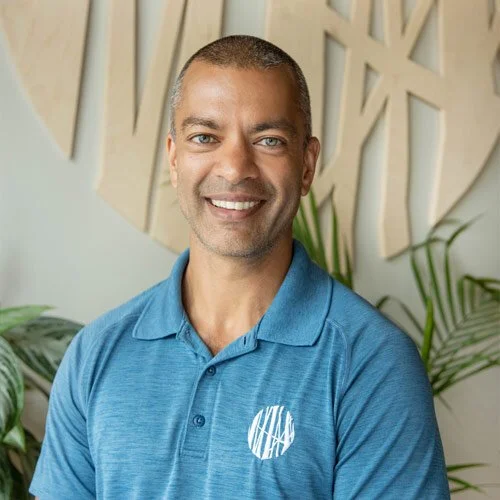WARM DATA: MAKING NUMBERS MEANINGFUL
By Coach Keshava
Approximate Reading Time: 4-6min
STARTING POINTS
As an education centre Restore Human has made it our mission to help guide decision making around health and fitness for a wide demographic, from teenagers to 80 year olds, people with pain and injuries to competitive athletes. With such a variance in age range, capacities, needs and time to train it creates a complex web of interrelated elements that affect and are affected by each other. By taking stock of cold data, namely numerical records of capacity (how long/heavy/fast/repetitions, etc.,) we get some of the story but not all of it.
Purely quantitative measures as above provide useful certainty in that there is a powerful perception of success in for example, moving from day 1 not being able to do a pushup to one month in, being able to do 5. This creates an objective proof that has a huge psychological effect in driving buy-in and feelings of progress.
However, if we only consider numbers, we might not take into account several other variables that are QUALITATIVELY important such as movement form, joint health, energy levels, life stresses, etc.
To aid us in this task let’s talk about the concept of a model. A model seeks to infuse warmth into cold data by crafting assumptions about the interrelationships of these elements acknowledging that at one extreme we might massively underestimate the scope of the problem, at the other we might get overwhelmed by too many variables to craft a useful real world model.
An English statistician named George Box stated that "all models are wrong but some models are useful." In other words, any model is at best a useful fiction—there never was, or ever will be, an exactly normal distribution or an exact linear relationship. Nevertheless, enormous progress has been made by entertaining such fictions and using them as approximations.
Assumptions, whether implied or clearly stated, are never exactly true. So the question you need to ask is not "Is the model true?" (it never is) but "Is the model good enough for this particular application?"
Enter warm data, a term coined by Nora Bateson - namely data that seeks to examine the interrelationships that integrate elements of a complex system. By marrying quantitative data (statistics) with a qualitative dynamic we can better connect people to the underlying complexity of large topics such as health and fitness.
A USEFUL MODEL THAT IS INHERENTLY WARM
At Restore Human we build out the training process around several models, one of them being the ACHE model.
Awareness
Curiosity
Habituation
Evolution
First, the Awareness piece comes in. It is important to be aware of and understand sensation in your body, becoming aware of the pain signals, and when and where they happen. General body awareness (something that we are always working on at Restore Human) is a fundamental skill in being able to move with efficiency and grace.
The second piece of the puzzle is Curiosity. When I do this movement, does it hurt? What about this? Instead of getting angry at my body for being in pain, can I get curious about how this pain could be an opportunity to get stronger and prevent further damage in the future?
Thirdly, Habituation. Let’s look at some strength and mobility drills to get the body part that is causing you pain, and its surrounding tissue, stronger. Let’s habituate a certain movement pattern that will eventually help it to heal and perform better.
Finally, we see Evolution. Results! Maybe, now, I can run faster, maybe I can lift my leg using my core more which results in feeling less pain in my hip. Whatever it is, it’s a personal evolution in your movement journey.
Using this model I have reframed, and am continuing to reframe, how I look at the various injuries that I face with dancing at a high level again. In turn, this helps inform my approach when helping my clients with their own rehabilitative movement journeys.
FROM KNEE PAIN TO CONTEXTUAL TRANSFER
Once the person involved in this scenario is no longer aware of any knee issues we can take them to our more quantitative focus such as a key metric in the Restore Method: Step-ups for time. In seeking a valuable proxy for hiking/trekking capacity we have found that being able to progressively increase the duration and load bearing in the step-up from 2 minutes to as long as 40 minutes with added load appropriate to the athlete, has a massive carryover to getting outside and into nature with confidence.
Here we are crafting another key narrative: namely the bigger picture of success indoors in various exercises allowing the person to interact and derive the benefits from nature that increasingly has been shown to improve several markers of health.
Peter Kahn from the University of Washington who has researched the city vs. nature topic extensively writes:
“As we build bigger cities, we’re not aware how much and how fast we’re undermining our connection to nature, and more wild nature — the wellspring of our existence.”
“There’s an enormous amount of disease largely tied to our removal from the natural environment”
City dwellers in increasingly dense urban areas may have little or no contact with the natural world in their daily lives. That void is producing “environmental generational amnesia,” a term Kahn coined and elaborates on that describes how each generation creates a new idea of what’s environmentally normal based on experiences in childhood.
If, for example, a child never crawls through the dirt looking for critters, or never cranes her neck to take in the upward expanse of an old Douglas fir tree, she may not see as an adult that forests are degraded or certain species need protection.
REDISCOVERING MOVEMENT
So not only can we make the argument that increased physical capacity is extremely powerful from an individual level, we can also add meaningful warm data and thus also facilitate the preservation of our natural world. This will increase our capacity to visit more of our wild places and see the effects of climate change for ourselves. This, further increasing the web of interrelated elements from knee pain and poor sleep to healthy movement and outdoor exploration to involvement in environmental protection and behaviour that improves sleep, health and that adds more capacity and so on.
Ascribing meaning to data ultimately involves creating narratives that show how the objective proofs tie-in to better life energies, more capacity for taking on challenges, higher cognitive load and resilience. By embracing warm data, staying in relationship and pursuing more meaningful outcomes we are much more likely to succeed in building true long-lasting health for ourselves and those around us.
By Master Coach Keshava



